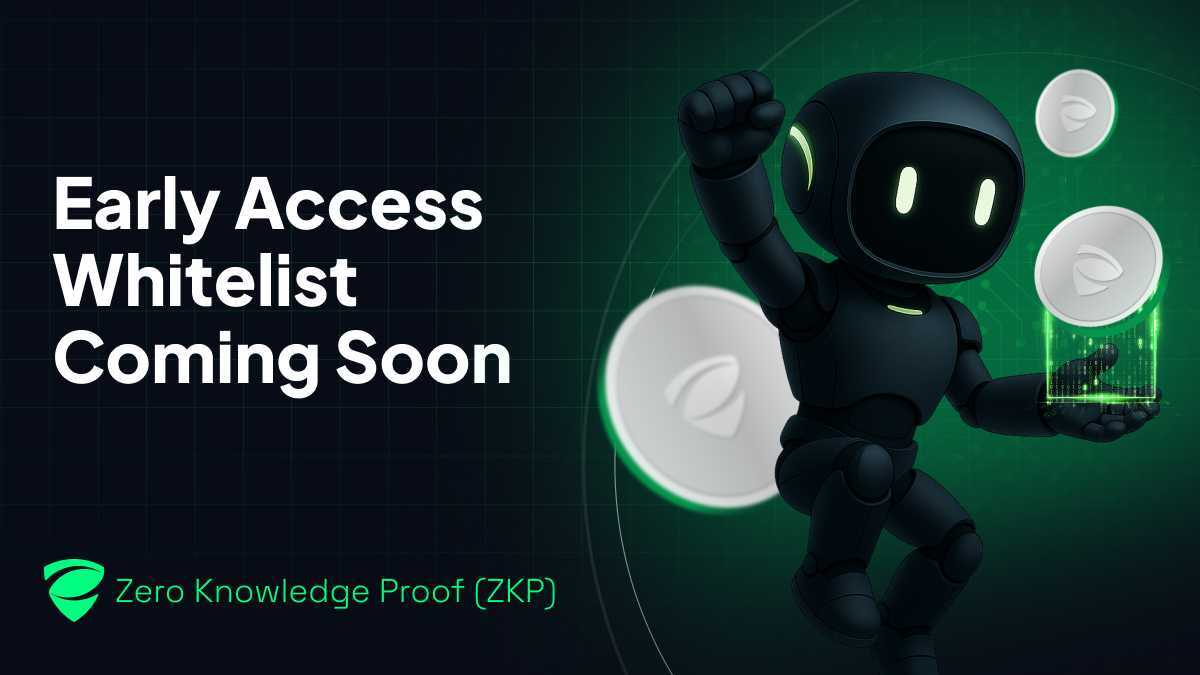Most major crypto launches follow the same pattern: institutions get the best entry points, and everyday investors join only after prices are already marked up. Zero Knowledge Proof (ZKP) is about to reverse that pattern. With its whitelist opening soon, the first allocation window will be reserved for retail participants, not large funds or corporations.
That shift is significant because ZKP is designed with the infrastructure that institutions usually chase—scalable zk-rollups, private smart contracts, and compliance-ready identity systems. For once, individuals will not be waiting on the sidelines. They’ll be the ones securing allocation before institutional players even enter the picture.
Why the Retail-First Approach Matters
The importance of this move lies in how crypto launches usually play out. Institutions—venture funds, hedge groups, and even banks—often secure discounted allocations before tokens are released to the public. By the time retail participants arrive, the entry price is higher, and the best opportunities are already taken. Zero Knowledge Proof (ZKP) is flipping this structure by opening its whitelist directly to individuals first.
- Front-row access: Retail participants get to buy in at entry-level pricing.
- Lower barriers: No institutional lockups or backroom deals.
- Broader distribution: More wallets and users holding early, not just concentrated whales.
This retail-first setup changes the power dynamic. Everyday investors often feel they are playing catch-up, but ZKP is signaling that the project’s first priority is to give individuals the opportunity to secure allocation. Once institutions arrive, pricing and demand will shift, but the first advantage goes to the retail side—an outcome rarely seen in blockchain history.
The Technology Institutions Will Chase
Even though retail will get the early shot, it’s clear that ZKP’s technical backbone is geared toward long-term enterprise adoption. The project combines two of the strongest proof systems in cryptography—zk-SNARKs for efficiency and zk-STARKs for scalability. That blend offers flexibility across use cases.
Key institutional-grade features include:
- Private smart contracts: Applications that execute without revealing sensitive details.
- zk-Rollups: Bundling thousands of transactions for higher throughput.
- Selective disclosure: Compliance without sacrificing privacy.
- Cross-chain bridges: Interoperability with Ethereum, Solana, and other networks.
Institutions look for infrastructure that can handle high transaction volumes, ensure regulatory compatibility, and integrate with existing systems. ZKP was built with those requirements in mind. This is why the whitelist’s timing is crucial—retail gets to secure access before the very features that attract banks, funds, and corporations push demand upward. The project’s architecture is not just for early adopters but for the next wave of large-scale adoption.
Why Timing and Allocation Are the Real Opportunity
When a blockchain project positions itself for institutional adoption, the biggest gains often happen during the early allocation phases. Typically, this phase is reserved for strategic investors or corporate partners. ZKP is doing something different—offering the whitelist to individuals before larger players step in.
This shift creates two key outcomes:
- Early pricing advantage: Retail gets access at lower costs, which historically have been reserved for private rounds.
- Reduced dilution risk: Instead of institutions holding large shares from the start, ownership is spread across many smaller holders.
Institutions rarely skip opportunities like ZKP’s ecosystem, which makes timing critical. Once they arrive, prices will adjust to match their demand. Retail participants who enter early will have secured allocations that are no longer available at the same levels. In short, the whitelist isn’t just about being first—it’s about being first before the crowd that usually moves markets arrives.
The Real-World Applications That Drive Adoption
The reason institutions are expected to adopt ZKP is not speculative—it’s tied to real-world use cases. The blockchain is designed to solve practical issues that businesses and governments face today.

Examples include:
- Finance: Proving solvency without revealing complete financial statements.
- Healthcare: Sharing medical records with full security but without exposing sensitive histories.
- Voting: Conducting elections where results are verifiable, yet individual votes remain private.
- Supply chains: Proving product authenticity without exposing trade data.
These applications require a mix of privacy, scalability, and compliance. Few blockchains manage to offer all three in a single Layer 1 design, but ZKP’s modular architecture makes it possible. For retail investors, these real-world drivers mean that adoption is not just theoretical. Institutions will move into ZKP because it solves their problems. The whitelist ensures individuals can be positioned before that momentum unfolds.
Wrapping Up
The story of Zero Knowledge Proof (ZKP) is not only about technology—it’s about timing and access. The whitelist opening soon will give retail investors a rare advantage: securing allocation before the institutional crowd arrives. The project’s privacy-first blockchain design, scalable zk-rollups, and compliance-ready features guarantee that large players will eventually join. But instead of being priced out, individuals now hold the first opportunity. This retail-first allocation model could set the tone for how early participation shapes the future of blockchain adoption. For once, retail doesn’t follow institutions—it leads, and that difference may prove to be the biggest advantage.
Disclaimer: This media platform provides the content of this article on an "as-is" basis, without any warranties or representations of any kind, express or implied. We assume no responsibility for any inaccuracies, errors, or omissions. We do not assume any responsibility or liability for the accuracy, content, images, videos, licenses, completeness, legality, or reliability of the information presented herein. Any concerns, complaints, or copyright issues related to this article should be directed to the content provider mentioned above.






